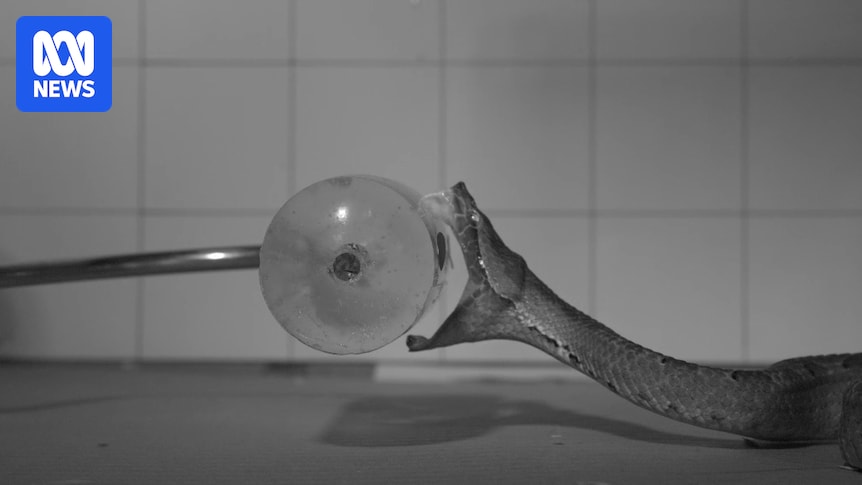
Venomous snakes are known for their lightning-fast strikes, capable of delivering deadly venom in a fraction of a second. However, a recent study using high-speed cameras has unveiled the intricate techniques these serpents employ to deliver their lethal payload. This groundbreaking research, conducted by a team of Australian scientists, is the largest of its kind and provides new insights into the striking behaviors of venomous snakes.
The study, published in the Journal of Experimental Biology, was led by Silke Cleuren, an evolutionary biologist at Monash University. Cleuren and her colleagues traveled to Venomworld in Paris, a facility where snakes from around the globe are bred for venom extraction used in medical applications. Here, they recorded the bites of 36 snake species from the viper, elapid, and colubrid families.
Vipers: Masters of Speed
Vipers are renowned for their rapid strikes, and the study confirmed this reputation. On average, vipers reached their prey within just 100 milliseconds, approximately three times faster than a human blink. The fastest among them, the blunt-nosed or Levantine viper (Macrovipera lebetina), struck in just over 20 milliseconds.
“If something is moving towards you, you have to see it with enough time to register that it’s moving, and then react to it,” said Professor Alistair Evans, a study co-author and evolutionary morphologist at Monash University. “Your brain tells your muscles to move, so less than 100 milliseconds is much, much faster than the mammalian startle response, particularly for large mammals like us.”
Vipers possess hinged fangs that allow for longer teeth, which fold into their mouths when not in use. During the study, if their initial bite was not optimal, vipers would “walk” their fangs into a better position to inject venom. Vipers dominated the study, comprising 31 of the 36 species analyzed.
Timothy Jackson, a snake venom researcher at the University of Melbourne who was not involved in the study, highlighted the significance of this research. “We don’t see a great deal of this kind of work,” he noted. “They convincingly make the case as to why their own study significantly improves our knowledge.”
Elapids: The Front-Fanged Predators
Most of Australia’s venomous snakes belong to the elapid family, characterized by fangs located at the front of their mouths. The Australian rough-scaled death adder (Acanthophis rugosus) was among the elapids studied, demonstrating remarkable speed by reaching its prey in about 30 milliseconds and moving at speeds up to 2.21 meters per second.
“Death adders strike extraordinarily quickly and are very much in the viper range … these are incredibly fast strikers,” Dr. Jackson said. “In fact, in terms of reaching maximum velocity, death adders were the second fastest species in the entire study.”
Elapids, with their shorter fangs, tend to approach their prey more closely before striking repeatedly to inject venom. Dr. Jackson emphasized the importance of the study’s quantitative analysis, which confirms existing scientific intuitions about snake behavior.
Colubrids: A Different Approach
The study also included the mangrove or gold-ringed cat snake (Boiga dendrophila) from Southeast Asia, the sole representative of the Colubridae family. This species features fangs situated towards the back of its mouth, resulting in a distinct biting style compared to vipers and elapids.
The gold-ringed cat snake reached its maximum gape, or mouth opening, sooner than other species and maintained it for a longer distance. Upon contact, it closed its mouth and manipulated its maxilla, a moveable upper jawbone, to create crescent-shaped cuts, potentially enhancing venom transfer.
“One of the interesting findings of the paper was how different families of snakes use their venom in different ways,” Professor Evans noted. “We were limited by what they had in Paris. But it’s at least the start.”
Dr. Jackson suggested that this study could serve as a blueprint for further research globally. “There’s a real proof of principle here,” he said. “I hope it can be more broadly applied and also potentially modified for other studies.”
The Future of Snake Venom Research
The insights gained from this study not only deepen our understanding of venomous snake behavior but also highlight the potential for future research. Expanding this work to include more snake species, particularly those native to Australia, could provide even greater insights into the evolutionary adaptations of these fascinating creatures.
However, as Dr. Jackson pointed out, such research requires collaboration with venom facilities and specific funding, which can be challenging to secure. Despite these hurdles, the study represents a significant step forward in the field of venomous snake biology, offering a foundation for future exploration and discovery.




